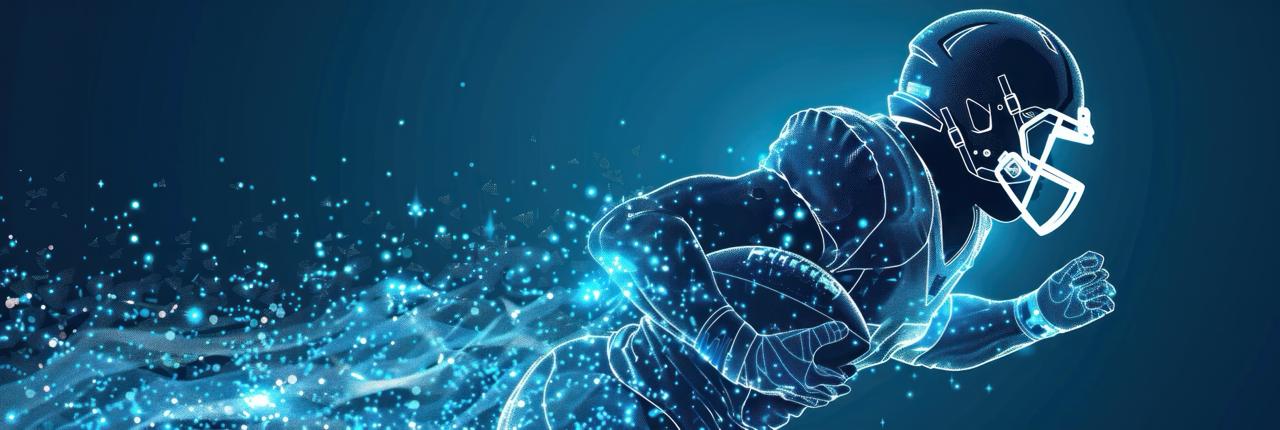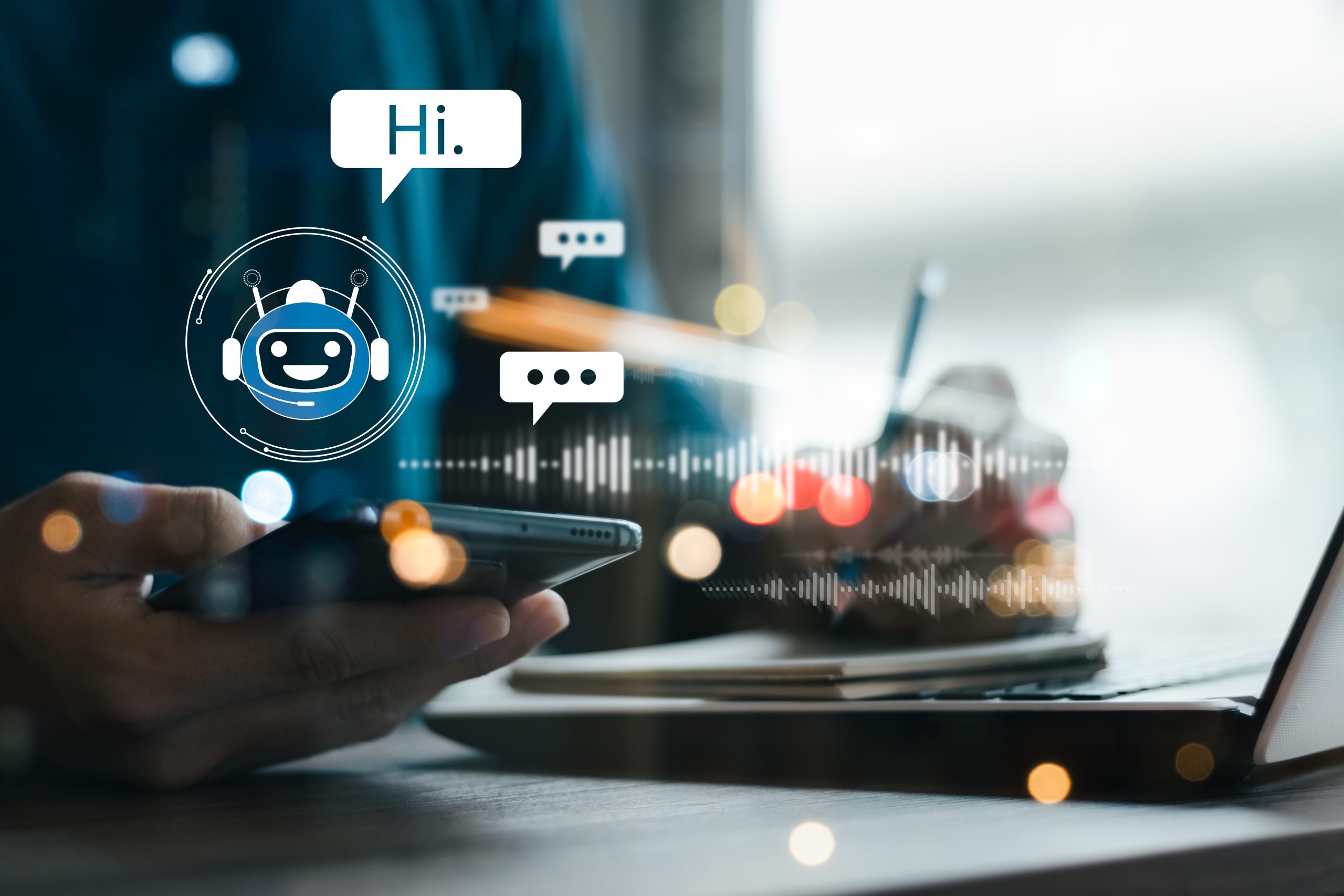Artificial Intelligence is no longer confined to science labs or Silicon Valley. It has rapidly become a cornerstone of modern industries—and sports is no exception. From analyzing player performance in milliseconds to reshaping how fans engage with their favorite teams, AI in sports is rewriting the rules of the game.
Gone are the days when decisions were made based solely on a coach’s gut instinct. Today, AI and sports are merging to deliver data-driven strategies, personalized training programs, and accurate AI sports predictions that rival human intuition. This transformation is not limited to professional leagues—youth development, amateur competitions, and fan engagement platforms are also embracing this shift.
The use of artificial intelligence in sports is helping teams gain a competitive edge, prevent injuries, and even change how games are officiated. But as its adoption grows, so do the questions: How is AI being used in sports? What impact does it have across different aspects of the sports industry?
In this comprehensive guide, we break down how AI is reshaping the sports landscape. Whether you’re a coach, athlete, tech entrepreneur, or fan, this article will help you understand how sports and AI are now inseparable—and why that matters more than ever.
What is AI in the Sports Industry?
Artificial Intelligence in the sports industry refers to the use of advanced algorithms and machine learning systems to collect, process, and analyze massive amounts of sports-related data. This includes everything from player stats and biometric information to game footage and fan behavior.
At its core, AI in sports works by identifying patterns in data that would otherwise go unnoticed. For instance, AI can evaluate thousands of hours of match footage to identify weaknesses in a team’s defense or to recommend optimal training exercises tailored to an athlete’s current performance metrics.
One of the most transformative elements is AI’s ability to continuously learn and adapt. As it processes more data, its insights become sharper, making AI sports predictions more reliable and strategic planning more effective.
Ultimately, artificial intelligence sports applications aim to increase efficiency, accuracy, and performance at every level—from training grounds to stadiums.
A Comprehensive Overview of AI in the Sports Sector
AI systems use real-time data capture, predictive models, and video analysis to help athletes, coaches, and organizations make better decisions. Technologies such as computer vision, natural language processing, and deep learning are central to this transformation.
Key areas of impact:
- Training optimization: AI evaluates player performance, sleep, recovery rates, and nutrition to craft tailored training regimens.
- Scouting and recruitment: Algorithms analyze players’ past performances and potential to fit team dynamics.
- Coaching assistance: Coaches receive real-time suggestions on strategies, player rotation, and opponent weaknesses.
Example: In soccer, AI tools can monitor every move on the field, track ball possession trends, and highlight tactical errors within seconds.
What sets artificial intelligence in sports apart is its scalability. Whether you’re managing an elite team or overseeing youth development programs, AI tools can be calibrated for specific goals and environments.
The sports sector is becoming a model for how AI can enhance human ability rather than replace it—providing intelligent support to make faster, smarter, and more informed decisions.
What Are the Key Advantages of Artificial Intelligence in the Sports Sector?
The rapid adoption of AI in sports is not just a trend—it’s a game-changer. As technology becomes more embedded in athletic environments, teams, coaches, and sports organizations are discovering significant advantages in how they train, strategize, and engage with fans.
So, how is AI being used in sports to deliver measurable benefits?
Enhanced Decision-Making
Artificial intelligence in sport enables faster, more accurate decisions. AI algorithms process massive datasets in real time—whether it’s player tracking, environmental conditions, or team strategies—leading to smarter choices during and between games.
Improved Player Performance
Through wearables, computer vision, and deep learning, AI and sports technology track player movement, monitor fatigue levels, and analyze biomechanics. These insights allow for precise performance adjustments and personalized training programs.
Injury Prevention
AI models can predict injuries before they happen by identifying risk factors like movement irregularities or overtraining. This proactive approach helps teams protect their most valuable assets—athletes.
Fan Engagement
From chatbots to personalized content recommendations, AI enhances the fan experience. Real-time data insights power more dynamic interactions both online and in-stadium.
Cost and Resource Optimization
AI reduces the need for manual analysis and redundant administrative tasks. This translates into lower operational costs and more streamlined workflows across departments.
The advantages of AI in sports stretch far beyond statistics. It’s reshaping how games are played, managed, and enjoyed. As adoption grows, the edge will belong to those who integrate AI with intent and strategy.
Where Is Artificial Intelligence Applied in the Sports Industry?
Talent Acquisition
AI helps identify and evaluate talent with greater accuracy than traditional scouting. Algorithms assess player potential based on historical performance, injury records, physical stats, and even psychological profiles.
- Example: Soccer clubs use AI to track youth league players and predict which individuals may excel in professional systems.
Data Analysis
One of the most critical functions of artificial intelligence in sport is data processing. AI systems can analyze vast amounts of match data, player movements, and real-time game conditions to uncover patterns and strategic insights.
- Enables fast adjustments during games
- Informs long-term planning and strategy
Models for Predicting Player Performance
How will a player perform next season? AI answers this by creating predictive models based on past data, physical health, and contextual game factors. These models help coaches plan lineups and training loads more effectively.
- AI sports predictions improve tactical planning and team performance forecasting.
Reviewing Game Footage
Manual video analysis is time-consuming. AI automates this by tagging events, identifying plays, and providing coaches with instant insights into key moments.
- Speeds up review sessions
- Supports real-time strategic adjustments
Training Program Development
AI personalizes training schedules by monitoring biometrics, energy expenditure, and daily readiness. Athletes receive tailored regimens to maximize gains and minimize injury risks.
- Artificial intelligence in sports brings a new level of precision to athlete development.
Athletic Gear
Wearables and smart equipment powered by AI track player performance in real time. Sensors in shoes, clothing, and gear provide critical feedback.
- Tracks acceleration, impact, fatigue
- Used for form correction and recovery optimization
Support for Officiating
AI helps referees make better calls by analyzing video and sound data. Technologies like computer vision are now integral to systems like VAR (Video Assistant Referee).
- Enhances accuracy and fairness
- Reduces human error in judgment
Sports Marketing
AI assists in campaign planning, fan segmentation, and performance analysis for marketing teams. It helps organizations create more targeted, impactful outreach strategies.
- Optimizes content delivery
- Personalizes promotional messaging
Coaching Tactics
AI offers real-time decision support during matches. It analyzes opposition behavior, evaluates current formations, and suggests strategy tweaks.
- Used by professional leagues to refine in-game tactics
- Empowers assistant coaches with data-backed suggestions
Athlete Wellness
Monitoring sleep patterns, mental stress, hydration, and overall wellness is now possible through AI. This holistic view enables better recovery planning and long-term athlete care.
- Prevents overtraining
- Enhances overall performance sustainability
From the locker room to the boardroom, artificial intelligence in sports is driving innovation, precision, and competitive advantage. By embedding AI into their ecosystems, sports organizations are unlocking deeper insights and elevating every aspect of the game.
What Are the Most Impactful AI Applications in Sports?
AI in sports is no longer limited to predictive analytics—it’s transforming the way games are played, athletes are trained, and organizations operate. From elite-level performance to grassroots engagement, AI is helping stakeholders make smarter, faster, and more personalized decisions.
Let’s explore the top applications of AI in sports that are reshaping the industry.
Computer Vision for Performance Tracking
Computer vision enables AI systems to analyze video footage frame by frame, capturing player positions, ball movement, and game dynamics in real time.
- Used in basketball to track shot trajectories
- Helps coaches assess tactical alignment and positioning
- Supports post-match breakdowns and performance reviews
Injury Prevention
Wearables embedded with AI monitor physiological data like heart rate, body temperature, and stress levels. Machine learning models predict potential injuries before symptoms arise.
- Reduces downtime due to overtraining or strain
- Personalized recovery schedules based on biometric feedback
Coaching and Strategy Tools
AI systems digest opponent behavior, historical performance, and real-time match conditions to provide tactical recommendations.
- Helps coaches adjust formations and play styles mid-game
- Generates predictive outcomes based on player matchups
Training Simulations
AI-enabled VR and AR environments allow athletes to train in simulated game scenarios. These systems improve reaction times, decision-making, and spatial awareness.
- Widely used in American football, cricket, and motorsports
- Improves muscle memory and mental conditioning
Automated Sports Journalism
AI tools now generate real-time game summaries, performance reports, and highlight reels. These are used by sports broadcasters, media teams, and fans alike.
- Supports fast content creation
- Enhances real-time storytelling
Talent Scouting and Recruitment
AI streamlines the scouting process by assessing data on thousands of athletes, ranking them by performance potential, and even estimating their long-term development.
- Reduces human bias in recruitment
- Accelerates decision-making in draft picks or transfers
Referee Assistance and Decision Validation
AI-enhanced officiating tools, like goal-line technology and automated offside detection, increase accuracy and reduce controversy in match decisions.
- Improves trust in officiating outcomes
- Minimizes human error under pressure
Venue Operations and Logistics
Behind the scenes, AI assists in facility management, crowd control, and security via computer vision, facial recognition, and logistics algorithms.
- Enhances operational efficiency
- Improves event safety
The benefits of AI in sports extend far beyond athlete performance—they touch every stakeholder. From trainers to fans, referees to broadcasters, AI and sports form a powerful partnership driving smarter, more immersive experiences.

How Is AI Enhancing the Fan Experience in the Sports Industry?
Here’s how AI is revolutionizing the sports fan experience.
Engaging Virtual Reality Experiences
AI powers hyper-personalized virtual reality environments where fans can experience matches from multiple angles, replays on demand, or even “sit” in VIP zones from home.
- Used in soccer and Formula 1 for 360-degree race viewing
- Immerses remote fans in live-action like never before
AI Navigation Within Stadiums
AI-powered apps help fans navigate large stadiums by analyzing foot traffic, queue lengths, and routes in real-time.
- Reduces congestion during entry, breaks, and exits
- Improves accessibility and convenience
Personalized Content Delivery
Machine learning recommends personalized content, match highlights, behind-the-scenes footage, or player stats based on individual preferences.
- Fans stay more engaged throughout the season
- Creates binge-worthy micro-moments across platforms
AI Chatbots for Player and Team Interaction
AI chatbots simulate conversations with players or provide instant answers about schedules, scores, and team news.
- Keeps fans informed and entertained
- Encourages two-way interaction between clubs and followers
Social Media Monitoring and Insights
AI tools scan and analyze social media interactions to identify trends, measure sentiment, and tailor messaging to fan mood and behavior.
- Helps clubs respond in real-time to fan feedback
- Informs PR and engagement strategies
Smart Stadium Traffic Flow
Computer vision and sensor data manage crowds more efficiently, directing traffic away from bottlenecks and managing restroom or concession queues.
- Reduces frustration
- Improves overall matchday satisfaction
Biometric-Driven Experiences
Using facial recognition or wearable biometrics, AI can personalize everything from check-ins to content delivery.
- Facial ticketing reduces entry time
- Biometric feedback tailors food, drink, or merchandise offers
AI in Ticketing and Merchandising
Dynamic pricing models adjust ticket or merchandise costs in real-time based on demand and purchasing behavior. AI also recommends bundle deals or upgrades.
- Increases sales conversions
- Maximizes seat occupancy and revenue
Targeted Discounts and Loyalty Programs
AI segments fans based on engagement, purchase history, or social activity to deliver targeted promotions and exclusive offers.
- Enhances fan retention
- Improves lifetime value per fan
The intersection of AI and sports isn’t just making waves on the field—it’s transforming the stadium experience, digital platforms, and fan engagement. As fans become more tech-savvy, organizations are using AI in sports to create smarter, more customized experiences that deepen loyalty and increase value.
How Is AI Used for Monitoring and Analyzing Key Metrics in Sports?
One of the most powerful uses of AI in sports is its ability to track and interpret massive volumes of performance data. Whether it’s a player’s in-game speed, fatigue levels, or shot accuracy, AI and machine learning are redefining how teams measure athletic output.
Key Metrics AI Can Monitor in Sports
- Player Movement & Speed: AI-powered cameras and sensors track acceleration, deceleration, and distance covered in real time.
- Load Management: AI algorithms evaluate training intensity versus rest periods to prevent overtraining.
- Biomechanical Analysis: Tools use computer vision to evaluate body posture, technique, and injury risk during gameplay or training.
- Injury Prediction: Wearables collect data on joint strain, muscle exertion, and stress to anticipate potential injuries before they happen.
These insights help coaches, physiologists, and analysts make informed decisions on substitutions, training plans, and player readiness. AI in sports analysis eliminates guesswork by converting raw performance into actionable feedback.
What Are the Difficulties of Implementing AI in Sports?
While the benefits of AI in sports are clear, the path to effective implementation is not without obstacles. Adopting AI-driven tools requires strategic investment, digital infrastructure, and a cultural shift in how data is used and trusted.
High Cost of Technology
Implementing AI systems—especially those involving computer vision, wearables, or deep learning models—can be prohibitively expensive. Smaller clubs and amateur organizations often lack the budget for these tools.
- Cost of hardware (cameras, sensors, servers)
- Maintenance and upgrades of AI platforms
- Talent acquisition for AI specialists and data scientists
Data Silos and Integration Gaps
Sports organizations often use multiple disconnected systems. Integrating these into a centralized AI platform requires substantial backend coordination.
- Inconsistent data formats slow down insights
- Real-time decision-making may be limited
Resistance to Change
Coaches and players may resist shifting away from traditional methods to rely on machine-driven analysis.
- Skepticism about AI replacing “gut instinct”
- Lack of training in interpreting AI-generated insights
Data Privacy and Security Concerns
With athletes’ biometric and behavioral data being collected, privacy becomes a major issue.
- Risk of unauthorized access or data breaches
- Legal liabilities around personal health data
Technical Limitations in Niche Sports
Some sports lack the volume of standardized data needed for robust AI models, limiting its effectiveness.
Despite the transformative potential of AI in sports, adoption requires time, investment, and a clear roadmap. Organizations must address both technological and human barriers to fully capitalize on the opportunity.
What Are the Ethical Issues in Artificial Intelligence and Sports?
As AI and sports become increasingly intertwined, ethical concerns are rising to the surface. The balance between innovation and responsibility is crucial to maintaining fairness, transparency, and integrity in the world of athletics.
Data Ownership and Consent
Athletes generate immense amounts of data through wearables, video analysis, and biometric monitoring. But who owns this data?
- Do clubs or athletes control access and usage?
- Are players giving informed consent?
Without clear policies, misuse of personal data is a real threat.
Algorithmic Bias
AI systems are only as objective as the data they’re trained on. If historical data is biased, AI decisions—like player evaluations or recruitment predictions—can reflect and perpetuate those biases.
Lack of Transparency
Many AI in sports analysis tools operate as “black boxes.” When decisions are made by algorithms—like benching a player or adjusting strategy—stakeholders often don’t understand how or why.
Over-Monitoring and Surveillance
Continuous tracking of athletes’ physiological and behavioral data may create a sense of surveillance, leading to stress or reduced autonomy.
- Impacts mental health and player morale
- Raises concerns over ethical coaching practices
Dependence on AI over Human Judgment
There’s a growing concern that over-reliance on AI will devalue human intuition, creativity, and emotional intelligence—especially in coaching and leadership roles.
As we look ahead, understanding both the opportunities and challenges of AI in sports is essential for responsible growth and innovation.
What Is the Future of AI in Sports?
The future of AI in sports is not just promising—it’s transformative. From advanced analytics to real-time decision-making, the AI industry in sports is evolving rapidly.
As applications for AI in sport expand, we can expect deeper integration across operations—from player development to venue management and broadcast enhancements. AI will increasingly serve as a co-pilot for coaches, analysts, and executives, offering insights that go beyond human perception.
While the pros and cons of AI in sports must be managed responsibly, the direction is clear: the future of sports will be faster, smarter, and more connected—powered by artificial intelligence.
The integration of AI in sports marks one of the most significant transformations in athletic history. It’s enhancing every level of the game—from player health and performance to fan interaction and business operations. Whether analyzing in-game strategy, optimizing training programs, or engaging global audiences through AI-driven content, the possibilities are endless.
Still, it’s vital to balance innovation with responsibility. The pros and cons of AI in sports must be navigated carefully, ensuring that ethical standards, data privacy, and fairness remain at the forefront of AI deployment.
As the AI industry in sports continues to grow, stakeholders who embrace change—while addressing its challenges head-on—will lead the way in shaping the next era of competition and entertainment.
Are you ready to harness the full potential of AI and sports? Now is the time to act—align your strategy with emerging technology and stay ahead of the curve.




